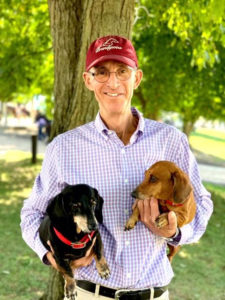Now that horse shows have begun running again, Jumper Nation Clinic continues — this time with exercises and tips to try in the warm up ring at shows. Jumper Nation has teamed up with top, respected riders who we love for both their horsemanship and their creativity with exercises they use at home and at shows. Each week, we’ll be bringing you new tips and exercises to try in the warm up. You’ll be primed and ready to have a great round!
This week’s featured tips are courtesy of Geoff Teall, who operates his own training business, Montoga, out of Wellington, Florida and most recently launched a new endeavor, Geoff Teall Virtual Training.
The overarching theme when warming up is to keep things simple. Above all else, remain confident in the work you and your horse have done at home.
 Photo by White Fence Photography via ESP WEF.
Photo by White Fence Photography via ESP WEF.
You are only warming up for your class. I think the most important part of any warm up at a horse show is to remember just that: you are only warming up for your class. What is important is to be sure that your horse is physically and mentally warmed up. The physical piece is just being sure that you have given your horses muscles and ligaments the appropriate amount of time to warm up, or loosen up, enough for the task at hand. The mental piece is more about finding that balance between having the horse listening to the rider’s aids, and at the same time remaining relaxed.
Keep things as simple as possible. In my opinion, the key to achieving these goals is to do the very least amount possible, and to also keep things as simple as possible. You are not practicing what you are going to have to do in the ring necessarily, that should have been done at home, but instead just getting you and your horse ready to perform as you would like in the ring. With that in mind, I normally start with a small oxer, probably jumping it once in each direction. If that is good, I progress to a medium sized oxer, again on both leads, and then on to an oxer relatively close to the size of the jumps I will be jumping in the ring. If I have a horse that needs confidence, the last oxers might be either ramped, or a bit lower than what they will see in the ring. If I have a confident horse that needs to be reminded to be more careful, I might make the last oxers a bit larger, square, or both. I start with oxers because I want to be sure, ahead of everything else, that my horse is forward, in front of the leg, and getting across the jumps.
Do a little fine-tuning if necessary. Once I have accomplished what I need with the oxer I might finish with a vertical. Again, some horses need more confidence and I might leave their school with the oxer. If they are fairly confident, but at the same time careful, I would use generous ground lines at the vertical. This allows me to get their balance where I need it, but also protects them from getting a “rub” that they might not need. If I need to make a less careful horse a little “sharp” or get their attention before I go into the ring, I would use a taller vertical with less ground line.
Adjust balance and straightness if necessary. I don’t use a lot of landing rails or guide rails. I think these are overdone and unnecessary in most situations. If I have a straightening issue with a horse I solve it by turning right or left over the jump, and if I have a balance issue I normally solve it by stopping and backing on a line after the jump. I think that oftentimes as trainers, we get where we use too many things because we see others doing it and feel that we are not doing enough if we don’t do the same. The most important thing to remember when you are schooling for a class is to remain confident in the work you have done at home, listen to what your horse is telling you, and remember at all times that you are simply warming up, nothing training or building habits.
 About Geoff Teall
About Geoff Teall
Geoff Teall is a renowned USEF “R” judge and a veteran in the hunter/jumper industry – in competing, training, and governance. He has served as President of the American Hunter Jumper Foundation, Vice President of the USHJA, and held seats on the Board of Directors of the USHJA, the AHJF, the USHJA Foundation, and the USEF.
About Geoff Teall Virtual Training
Geoff Teall Virtual Training is a new endeavor that Geoff started just a few months ago in the light of the current COVID-19 pandemic, where riders may not be able to travel for coaching or may simply be seeking additional guidance. Riders can submit a riding video, and Geoff will provide 30 minutes of virtual coaching via phone/email. For more information, visit Geoff Teall Virtual Training on Facebook, or email Geoff Teall directly at: gcteall@gmail.com to get started.
Missed grids and exercises from our first Jumper Nation Clinic series with top tips for practicing at home? Check out them out here:
- Sloane Coles & Spring Ledge
- Jane Ehrhart & River Hill Farm
- Emily Beshear & Deep Purple Eventing
- Doug Payne & DP Equestrian
- Max Amaya & Stonehenge Stables
- Geoff Teall and Montoga/Geoff Teall Virtual Training
- Katie Leverick and Millennium Farm
- Phillip Dutton and Phillip Dutton Eventing
- Caitlyn Shiels and True North Stables
Go Jumping!
Editor’s Note: Words by Geoff Teall. Some responses have been edited for clarity. Bio photo by Phelps Media Group.
